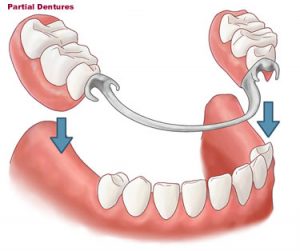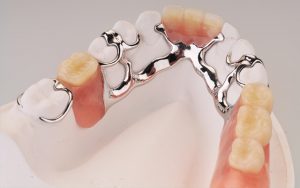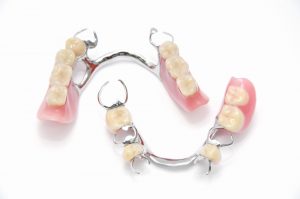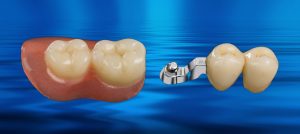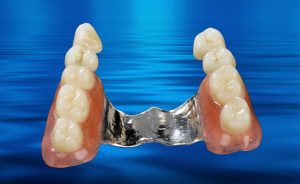Dentures are artificial restorations of teeth and surrounding supporting tissue, which, unlike crowns and bridges, can be removed from the mouth and put back in place.
They are the forerunners of partial skeletal prostheses partial acrylic dentures. Such prostheses have a number of disadvantages in relation to partial skeletal prostheses and can be made as a temporary solution.
PARTIAL SKELETONED PROSTHESES are dentures that are made when a small number of teeth are left in the jaw. Such prostheses basically have a metal skeleton that gives strength. They compensate for lost teeth and the force of pressure during chewing is usually transmitted to existing teeth with special connecting elements that also hold the denture in place in the mouth. Dentures can be held to the teeth either with metal hooks that cover the existing teeth and can be seen in the mouth, or with precise connecting elements, the so-called “attachments” that hold the denture much more precisely, transmit pressure to the teeth more correctly and are hidden, ie. they are not visible in the mouth. For a partial skeletal prosthesis with attachments, it is necessary to prepare the teeth to which the prosthesis will be attached, ie special metal-ceramic crowns are made on those teeth, the so-called “dedicated crowns”. Partial skeletal prostheses with attachments in combination with dedicated crowns are the best solution among partial prostheses.


